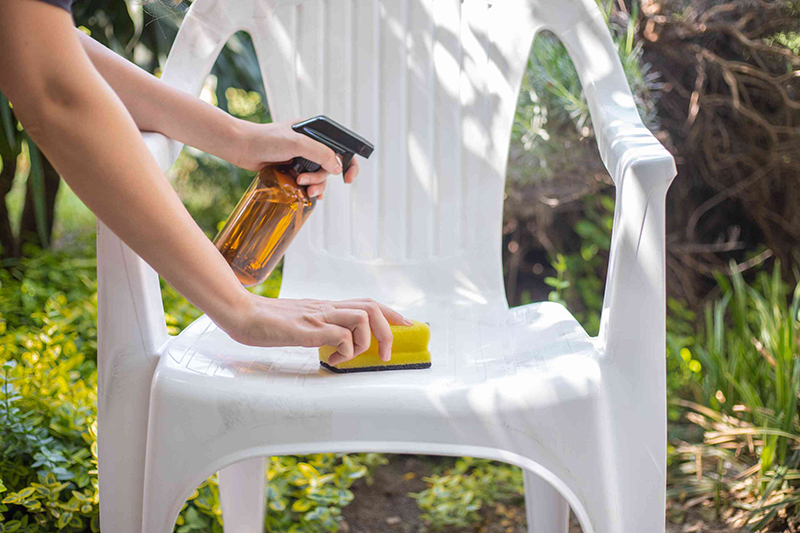- Mon-Fri 9am-4pm EST
- 888-663-4621

Outdoor furniture is delicate and expensive. The latter is ample reason to keep your patio furnishings in pristine condition. Given the diverse materials that outdoor furniture comes in, there are numerous approaches to cleaning and maintaining outdoor equipment. Below is some expert advice on how to preserve patio furniture based on its material.
Wicker
Wicker furniture is preferred for its low maintenance needs. However, some upkeep is required. Unfortunately, spiders are to wicker as moths are to flames. Spiders like hiding in the many nooks and crannies that wicker furniture provides.
Vacuuming is a simple method to remove creepy crawlers. Moreover, dirt is likely to build up as well. While hosing down your furniture is an efficient technique, excessive water tends to weather wicker. With that said, a low-pressure hose will do the trick.
Rattan
Found in many eco-friendly households, rattan patio furniture is lightweight and has the essence of bamboo. Much like wicker, too much water is the kiss of death for rattan. When scouring rattan equipment, use a gentle soap and soft cloth. If there are leftover stains that demand more attention, a soft brush is known to eliminate pesky blemishes. For added preservation, consider coating the furniture with an extra layer of lacquer to prolong its life.
Cast Iron
Far fussier than most patio material, cast iron warrants regular cleanings. All that’s needed is detergent, a sponge, and a lint-free towel. Once the cleaning elixir has been prepared, dip the sponge in lukewarm water and get to scrubbing. Experts suggest getting the sponge sopping wet for an optimal cleanse. Since towel remnants tend to cling to cast iron material, a lint-free towel works best during the drying process.
Plastic
Not surprisingly, plastic outdoor furniture is the least durable. For white plastics, use bleach to remove grime. With colored plastics, white vinegar works better and doesn’t leave behind splotches of acid-washed residue. In areas that are hard to reach, a finer utensil including a toothbrush is recommended. The toothbrush will effortlessly work into the grooves of the furniture and eliminate dirt that’s otherwise unnoticeable.
Patio Cushions
Grass stains, mold, and mildew all make their way to patio cushions eventually. Much like the furniture itself, patio cushions can be cleaned using a sturdy scrubbing implement and dish soap. For larger pillows, using a hose is a savvy approach. Unlike outdoor furnishings, cushions take significantly longer to dry. Setting them out in the sun is the most efficient method, but a hair dryer will undoubtedly expedite the process.
Protecting Patio Furniture during the Winter Months
For the sake of your outdoor equipment, it should be covered during the winter. Harsh winter weather causes patio furniture to decay at an alarming rate. In essence, it can’t withstand freezing climates. Furniture covers are most commonly used for protection, but car wax is known to help preserve plastic and aluminum pieces as well. If you’d like more shelter, consider stowing your patio equipment in a storage space until the warmer months return.
You must login to post comments.